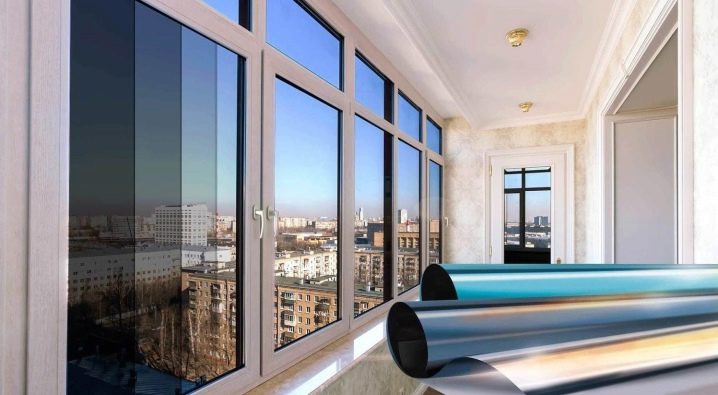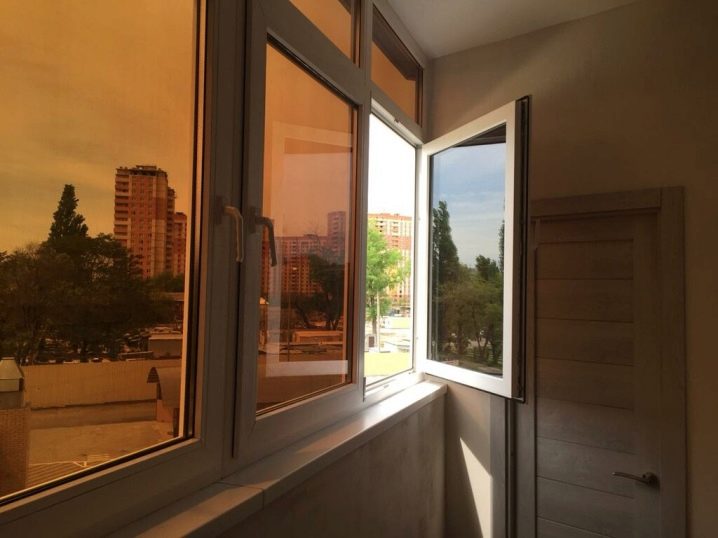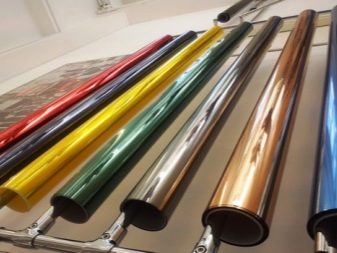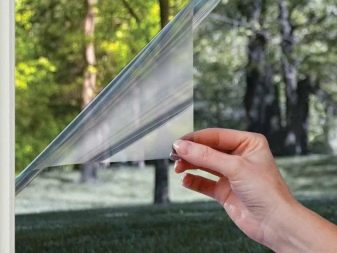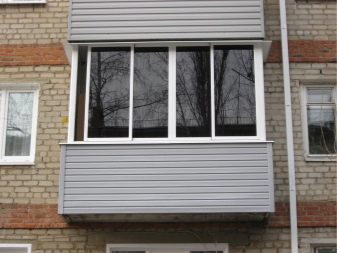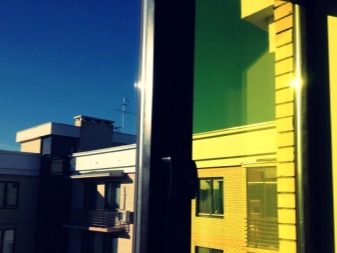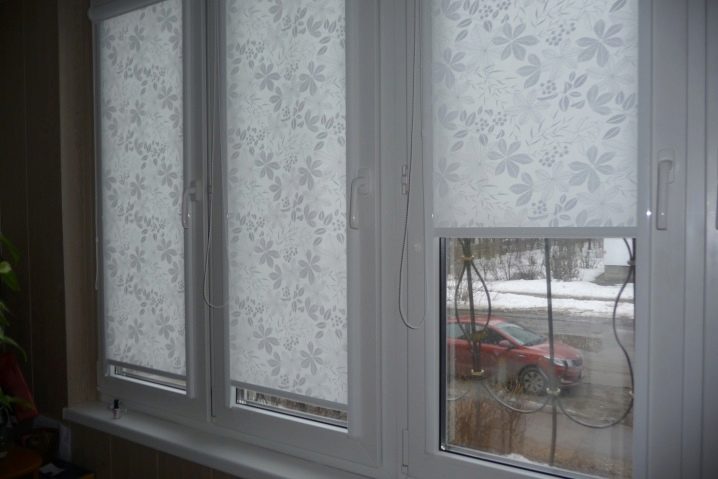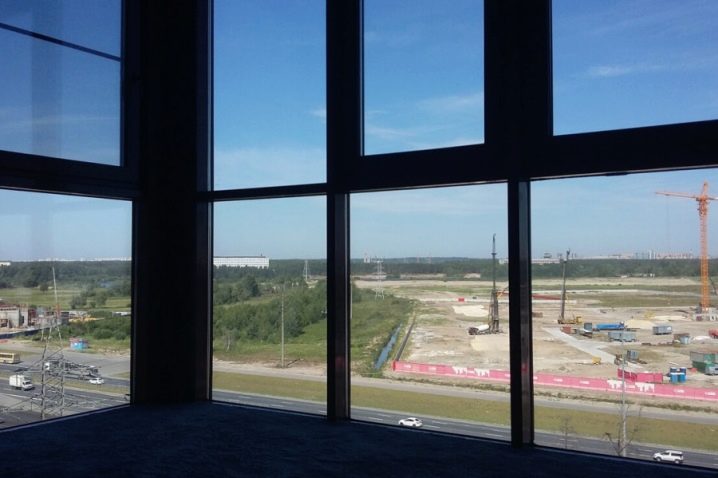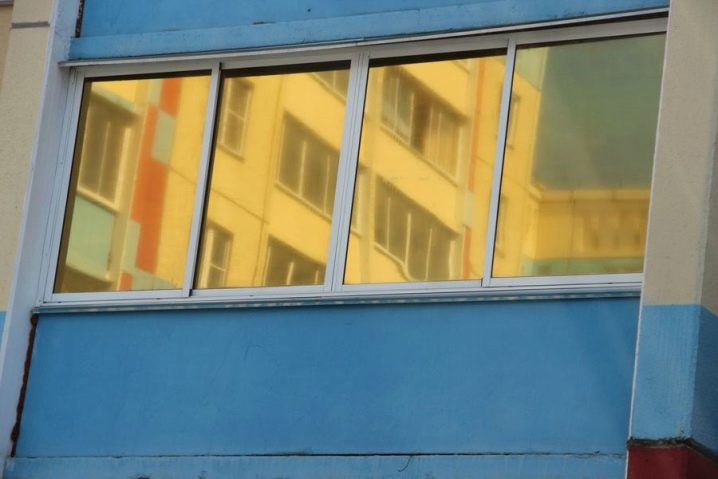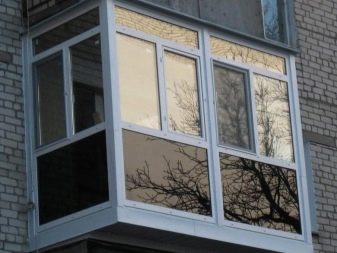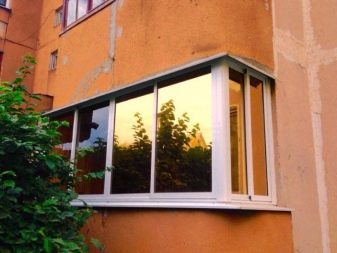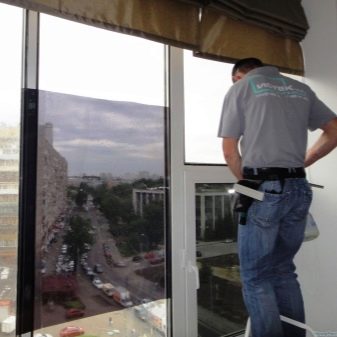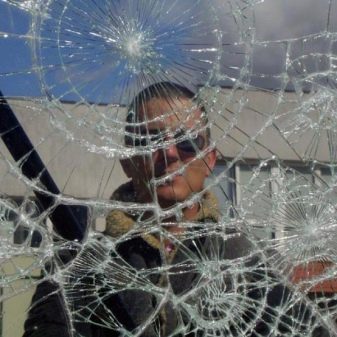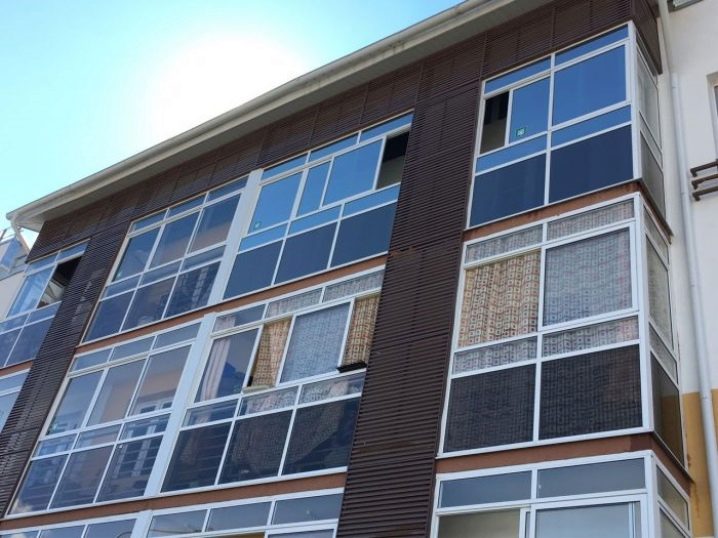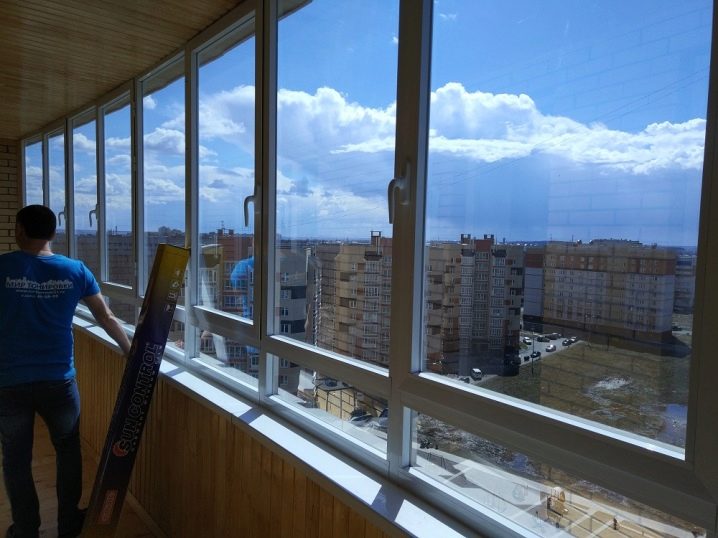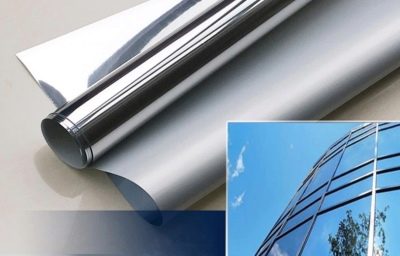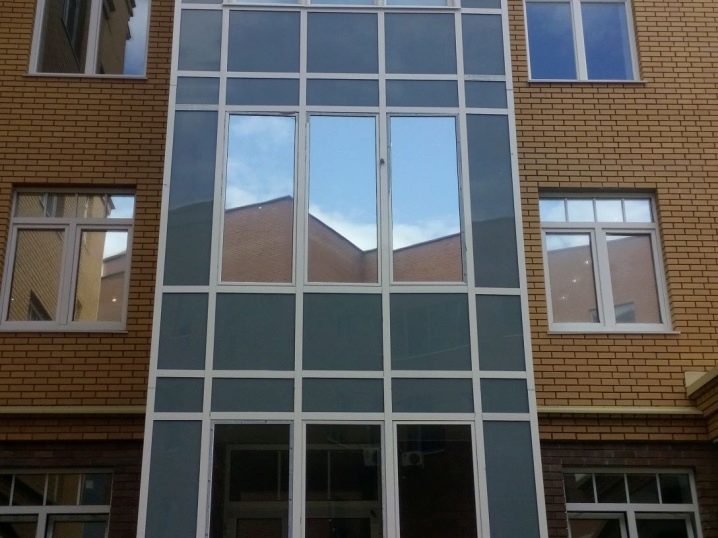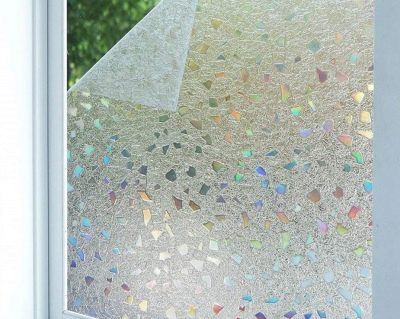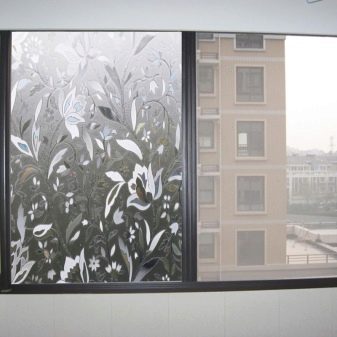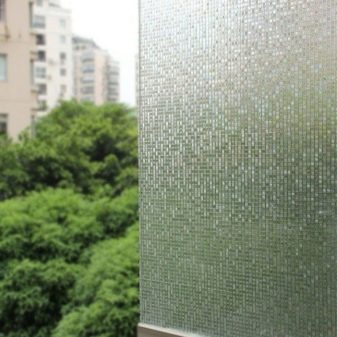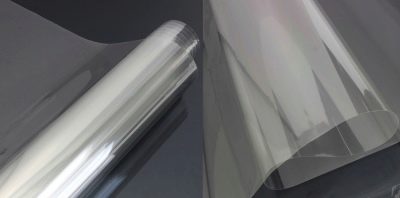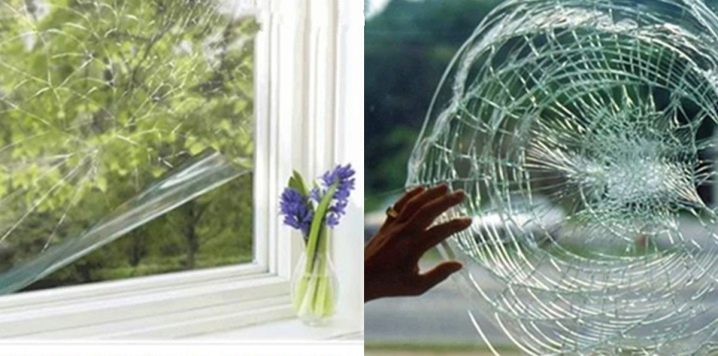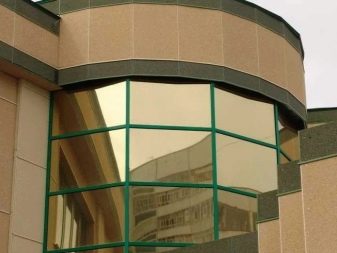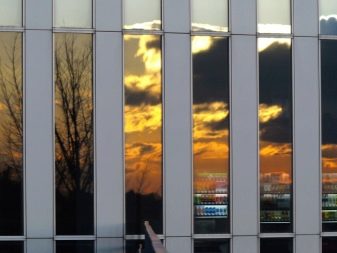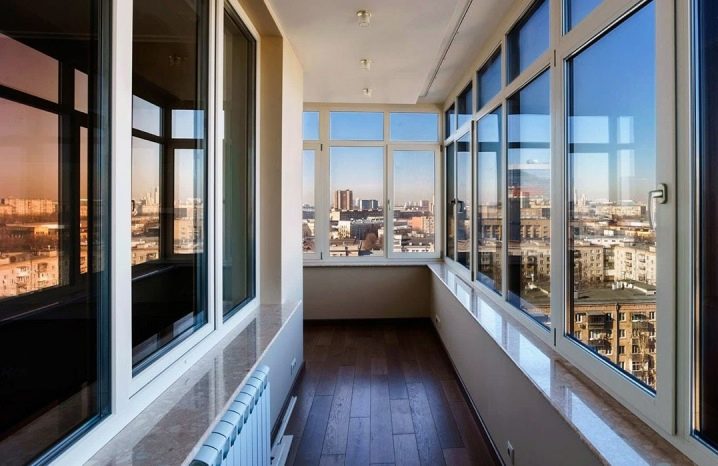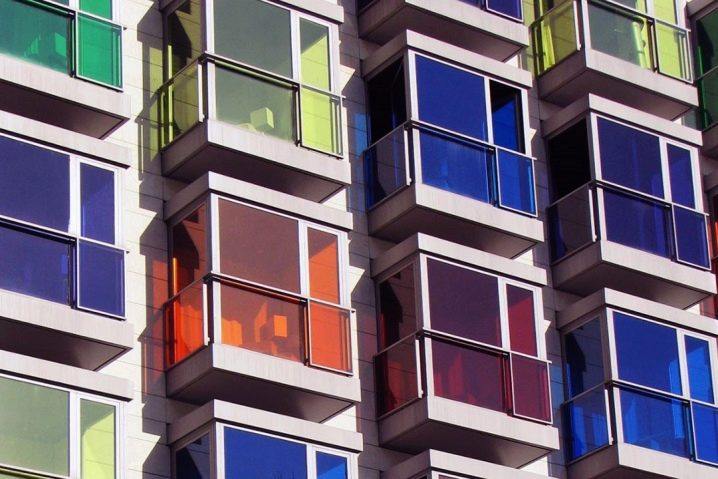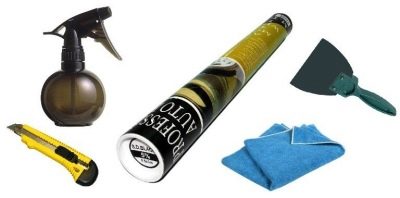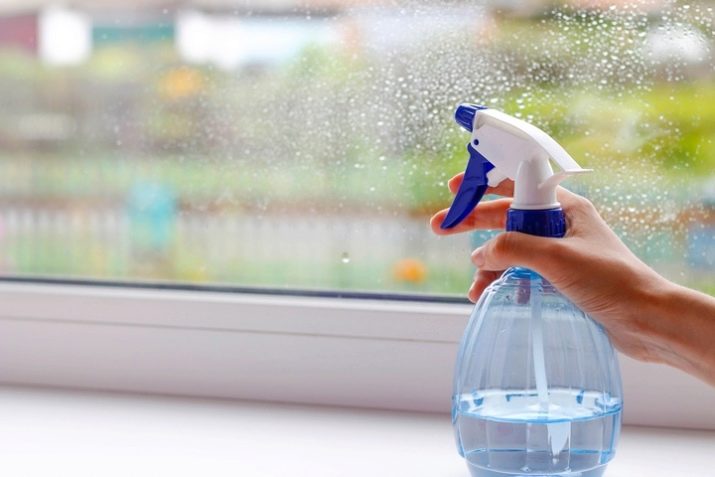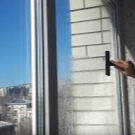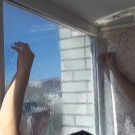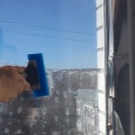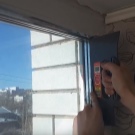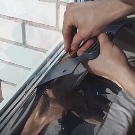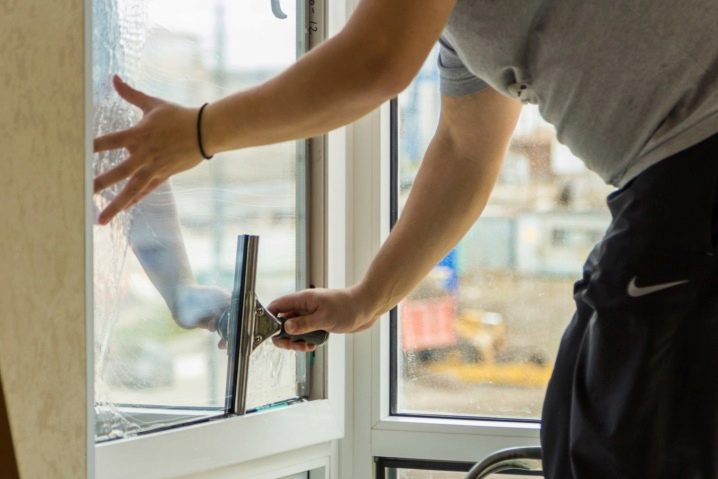Balcony and loggia tinting options
In recent years, more and more often you can find such a phenomenon as a darkened loggia in an apartment. This is not surprising, because balcony tinting gives a lot of advantages. Previously, it was necessary to purchase special balcony glasses for tinting, rearrange them. And now you just have to tint them with a film - and you can get the amount of light that is necessary.
Let's try to figure out what advantages and disadvantages the tinting of loggias has, what types of coating would be better to use, as well as how to properly glue such a film for windows on our own.
Advantages and disadvantages
Before starting a review of the different types of coatings for tinting, let's try to understand what advantages and disadvantages such a coating has, and whether it is worth using it at all. Let's start with the merits.
- Reflection of sunlight and ultraviolet radiation. This is the main advantage of this technology, which makes it possible to make the microclimate in the apartment as comfortable and convenient as possible for all family members.
- Durability. Whichever option is used, it is not afraid of the wind and all kinds of precipitation. Moreover, regardless of whether the windows are always closed, or they are often open.
- The tinted balcony does not require too much maintenance. At the same time, blinds and curtains, on the contrary, require a lot of attention due to the fact that they strongly collect dust and dirt. And cleaning or washing them is not the easiest process.
- Film-tinted balcony provides high protection from too bright light, various radiation and ultraviolet radiation, which becomes more and more dangerous for human health every year.
- If the area of the loggia or balcony is small, and space is critical, then the tinted coating will not take up a centimeter of space.
- The ability to select the required type of material. That is, to find a suitable degree of illumination in the context of the fact that there are various degrees of darkness, as well as a large number of shades and colors.
- Such material is very easy to glue. This does not require any special skills and expenditure of energy, thanks to which even a child can cope with such a task.
- An excellent option in terms of price and quality ratio. The cost of such a film is very low, but its effectiveness can be called one hundred percent, which is why it will be beneficial to literally everyone.
- The covering ensures the protection of the living space from prying eyes. This moment will be especially important for people living on the lower floors of houses.
Like any thing, such a film has a number of disadvantages, which should be mentioned.
- Reduced light transmittance. That is, it will begin to darken earlier than the neighbors. And in the daytime, there may be a lack of light, which can entail additional electricity costs.
- The tint of the film should be taken into account. If a brighter tint film is taken, then the light that will come from the window will have an appropriate shade and may not fit into the interior at all.
- Despite the fact that you can stick such a film on the windows in just a couple of minutes, you just can't get rid of it. This will take significantly more time.
- Many types of films fade very quickly. It is not always possible to choose a durable option the first time.
- If toning with a strong metallized layer is chosen, then it can delay the signals of mobile towers, which may cause a decrease in the level of reception of the mobile signal in the room.
Coating overview
Now let's try to understand the different types of coatings and analyze their features and benefits. On the market today you can find the following types:
-
decorative;
- athermal;
- sun protection;
- mirrored;
- shockproof;
- architectural.
Now let's talk about each of the categories in more detail.
Blackout, sunscreen
Sunscreen or blackout film is in high demand today. It has reflective characteristics and does not transmit up to 98% of harmful radiation. This prevents things and objects in the room from heating up and burning out. It also prevents intense light from forming inside the balcony.
This also makes it possible to maintain a comfortable temperature on the balcony, because in the summer the room is cooled, and in the winter the heat is retained in the house.
Mirrored
This category of coatings is also called camouflage, because thanks to it, the visibility from the street of everything that is happening in the house will be zero. At the same time, visibility from the inside is not limited by anything. Such coatings are quite good protection against constant fogging of windows, solar radiation. It should not be forgotten that this is quite aesthetically pleasing.
Separately, we note that according to the degree of strength of this category, the material can be varied.
Decorative
The purpose of these types of coatings will be to create a variety of effects. This or that effect will depend on the type of film used. This film can be brown, white, or any other color. Various kinds of graphic designs, different patterns can be applied to it, and the surface can be matte or glossy.
If the owners of the house need to protect the premises from ultraviolet rays, then this type of coating is definitely not suitable for this.
Shockproof
This type is designed to protect the glass on the balcony from impacts and various physical effects. With such a protective coating, it is simply impossible to accidentally or deliberately break the balcony glass.
Even in the event of a crack, the glass will not crumble down, but will remain in the frame.
This will ensure that no one gets hurt if the glass is damaged.
In addition, the protective film has good sound insulation characteristics. Its application makes it possible to significantly reduce the noise level from the outside. And a number of coatings have combined properties, that is, they can perform several functions. For example, protective and camouflage or protective and fire fighting. Typically, these films are made from 2 categories of materials:
- polymers;
- metal-containing compounds.
Architectural
This type of coating is used for gluing on panoramic windows or stained glass balcony panes. In addition to protection from the sun and various kinds of radiation, it performs the functions that are inherent in a shockproof film. Such a coating is distinguished by the degree of painting and various kinds of color effects. For example, Non reflective means a very tinted coating, and Gradient means a product with different shades, as well as the presence of gradient type transitions. And if there is a High Performance mark on the film, then we are talking about an imitation of a metallized coating.
Athermal
This type of coating can be called relatively new, but it has already won its supporters. Such a film is distinguished by the fact that it is completely transparent. Its characteristics are such that it can retain up to 60% of the heat and completely prevent ultraviolet radiation from entering the room.
As already mentioned, there are combined solutions in which several useful characteristics are present at once.For example, some guarantee sun protection and can be a great camouflage. Such a film is usually removable, which allows it to be dismantled during a period when there is no need for a particular function. By the way, it should be added that the quality will not suffer at all from this, and therefore it is possible to install and dismantle such a coating at least every day.
True, the cost of such products will be slightly higher.
What tools are needed
To tint the balcony yourself, you will need to have the following tools at hand:
- scissors for cutting film or a stationery knife;
- metal ruler or tape measure;
- a rubber spatula, which is required to smooth the surface and remove moisture;
- microfiber cloth or rag for final leveling of the surface and removing excess moisture;
- a spray bottle with a soap-based solution, which will make it possible to carefully apply the coating to the surface and not be afraid that it will immediately stick to it, and it will not be possible to eliminate various flaws.
How to tint with your own hands
So, to tint a balcony or loggia, you will need to perform a certain algorithm of actions.
- We measure the dimensions of the glass, where we will stick the film. We cut it off exactly to size. And if this does not work, then the joints will be too visible, for which reason it would be better to add 10-50 millimeters on each side. The cutting of the covering should be done on a firm and level surface. To do this, you should use the aforementioned scissors or a clerical knife.
- We clean the surface from dust, dirt, as well as grease stains, if any. To do this, moisten the glass well with soapy water, and then clean it with a rubber spatula. It is better to carry out this procedure not once, but to repeat it 1-2 times after that.
- Before starting pasting, you should once again apply the soap solution to the glass. And so that you can process every area of the glass;
- Now you need to remove the protective layer from the film. In addition, it should also be moistened with soapy water to prevent it from adhering directly to the surface. This will make it possible to adjust its position on the glass.
- The wetted film should be carefully applied to the glass surface so that the gaps around the perimeter are approximately the same everywhere. After that, it is required to smooth out the surface with a rubber spatula from the center towards the edges, until the moisture is removed from under the coating. Here you should be careful not to leave air bubbles, because then they are extremely difficult to eliminate. We add that if some air bubble still remains, then you can make a puncture with a needle as accurately as possible, and then level the surface qualitatively. If everything is done carefully, then no traces will be noticeable.
- At the last stage, you should trim the excess around the window perimeter. This can be done easily with a clerical knife, leading it so that it passes along the junction of the frame and glass. Here you can use a metal ruler as a guide. We add that it is very important to cut off the excess carefully so that any gaps are not visible at the joints.
Useful Tips
Some useful tips and tricks should be given that will make the process under consideration easier and help you get the best possible result.
- To get good adhesion of the coating to the surface, spray the glass with water or a mild soap-based solution with a spray gun. Spraying glass also solves the moisture problem.
- It will also be useful to moisten the spatula with water to reduce the risk of damage to the coating.
- Before gluing the film, you should thoroughly clean the glass surface from clogging, and also degrease it. In addition, the film should be stored so that various kinds of lint and dust do not get on it.Otherwise, in these places it will not adhere tightly to the glass, which may cause peeling.
- The coating can be glued on both sides of the glass. But if you want it to last as long as possible, then it is better to do it from the outside.
- It is best to cover the glass with a film when the air temperature is + 10 ... 35 degrees.
- The percentage of humidity in a room can range from 25-75%. In other cases, the adhesion of the coating to the glass may be insufficient.
- High-quality cleaning of damp-type rooms and spraying water can eliminate a certain amount of dust particles that will not settle on the surface of the film and will not cause insufficient connection of the product with the glass. Therefore, this stage should not be skipped.
- The material should be glued to the glass not immediately, but gradually. It is best to carefully glue 50-60 millimeters at a time, and smooth it carefully so that air bubbles do not appear, which will then be quite difficult to remove.
A visual overview of balcony tinting is presented in the following video.
